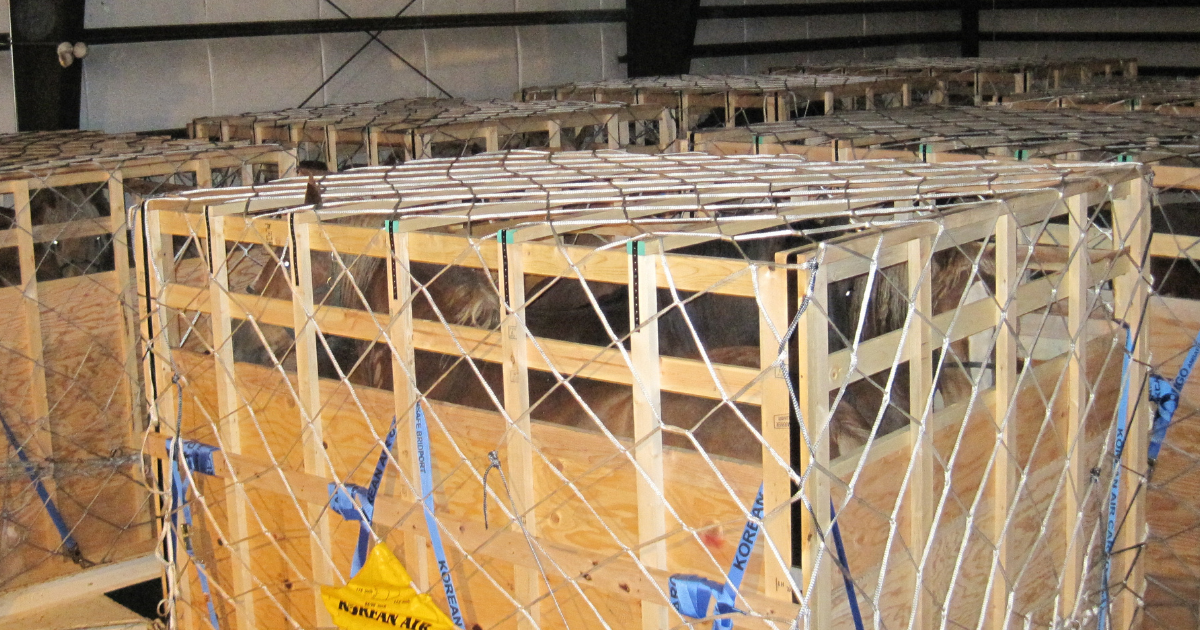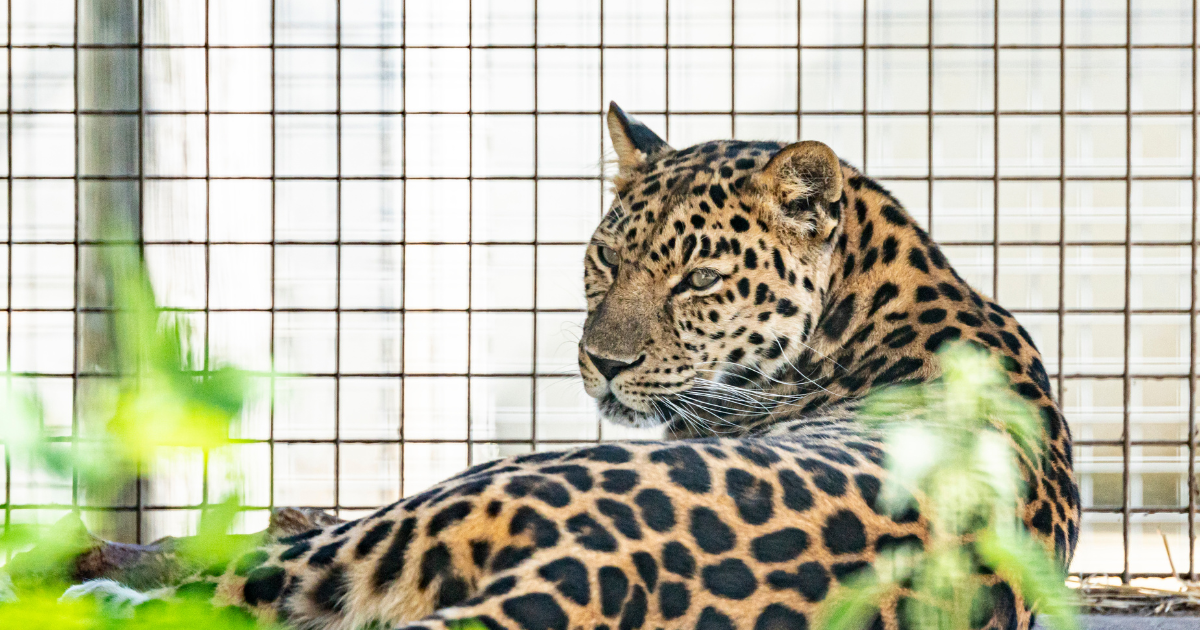After the summer snowstorms that hit Southern Alberta in early September this year, there have been increased sightings of large wildlife in urban centres.[1] On September 18th, a cougar was spotted outside of a hospital in southwest Calgary. Local police authorities and provincial Fish and Wildlife Officers were called to the scene. Although there are slight differences in reports of the event, it appears that, due to the threat of public harm should the animal escape, rather than tranquilize the beast, Wildlife Officers decided to kill it. The animal was shot and killed as it lay in the grass beside the hospital.

1. Calgary Sun: http://www.calgarysun.com/2014/09/18/cougar-raising-hair-at-calgary-hospital
2. CBC: http://www.cbc.ca/news/canada/calgary/cougar-in-calgary-killed-after-prowling-outside-hospital-1.2770187
3. National Post: http://news.nationalpost.com/2014/09/18/calgary-hospital-under-lockdown-after-two-cougars-spotted-in-area/
4. CTV News Calgary: http://calgary.ctvnews.ca/officers-shoot-cougar-spotted-near-south-health-campus-1.2012841
5. Global News: http://globalnews.ca/news/1570326/cougars-spotted-near-south-health-campus-spark-concern/
6. Huffington Post: http://www.huffingtonpost.ca/2014/09/18/cougars-calgary-hospital_n_5843124.html
[Videos available on some sites]
The public expressed concern after the incident about the way in which the Wildlife Officers handled the situation. Some voiced their disagreement with the officers’ decision to shoot the animal, rather than tranquilize it, and disagreed that there seemed to be a threat that required the killing of the animal. Others believed the officers’ actions were likely justified given the possibility of harm to the public, and trusted that the officers’ experience and knowledge in handling wildlife had informed their decision. Many others were just saddened by the loss of the beautiful, wild creature whose only crime had been to wander into the city proper.
Generally, the Alberta Wildlife Act (the “Act”) makes it an offence to contravene any provision of the Act which includes that: “a person shall not hunt wildlife without a licence.[2] To “hunt”, under the Act, means to “shoot at”, ”wilfully injure or kill” or “attempt to… injure or kill” a “subject animal”.[3] A “subject animal” includes a wildlife animal.[4] However, Wildlife Officers are exempted from this prohibition as employees of the Crown under the Minister’s administration, carrying out powers or duties involving wildlife management or the hunting of a subject animal.[5]
Fish and Wildlife Officers are appointed under the Wildlife Act, and receive their “powers and duties” from the Act, any other law and any other duties that are directed by the Minister.[6] The Act provides that wildlife officers “have all powers that are required for, that are incidental to or that form part of (i) the performance of their duties, whether or not those duties are specifically referred to in this Act, or (ii) any enforcement, investigation, administration or process under or relating to this Act or any directions, requirements, orders or prosecution or other legal proceeding under or relating to this Act”.[7] The Ministry of Justice and Solicitor General gives responsibility for human/wildlife conflict management to Alberta Fish and Wildlife Officers.[8] Among their responsibilities is the duty to “respond to wildlife/human conflicts that pose a public safety concern” and, if there is a public safety concern, to “capture, immobilize and relocate problem wildlife, or euthanize, if necessary”.[9]
The Act also protects Wildlife Officers from civil actions. Section 11 establishes that “notwithstanding any other law, no right of action lies and no right of compensation exists against (a) the Crown by virtue of the application of this Part, or (b) the Crown or a wildlife officer or wildlife guardian for any act done, or any failure to act, by any of them in good faith (i) while exercising powers or performing duties under this Act”. This means that a Wildlife Officer’s actions in carrying out his or her statutory duties are not subject to legal scrutiny. No exemptions exist in the Act, so the only apparent limiting factor to a Wildlife Officer’s actions in carrying out their duties or exercising their powers lies in the requirement that the act (or failure to act) must be done in “good faith”.
“Good faith” (sometimes called “bona fide”) is a slippery standard. The term is not defined in the Act and, in law, is largely tied to contractual dealings or Aboriginal rights issues, although it is used in many areas of law. The duty to act in good faith can be either expressly provided for in a statute, or an implied duty. In this case, the Act expressly sets out the statutory duty to act in good faith.
Definitions and treatment of “good faith” offered by Canadian courts and legal scholars highlight the flexibility given to the concept:
1) “Good faith is a flexible and pragmatic concept which addresses inherent inadequacies in rights-conferring language. Rights are not absolute – they are tempered by responsibility and are not to be abused”.[10]
2) Good faith is “to “refrain from engaging in conduct that is unfair or is in bad faith by being, for example, untruthful, misleading or unduly insensitive”.[11]
3) The implied public statutory duty referred to by Rand J. in Roncarelli v. Duplessis (1959), 16 D.L.R. (2d) 689 (S.C.C.) is that of good faith (p.707):
“Good faith” in this context … means carrying out the statute according to its intent and for its purpose; it means good faith in acting with a rational appreciation of that intent and purpose and not with an improper intent and for an alien purpose…”.[12]
Courts and legal scholars have acknowledged that the flexibility given to the term “good faith” in law can lead to unpredictability and uncertainty.[13] The Supreme Court of Canada in Wallace v. United Grain Growers acknowledged that “[t]he obligation of good faith and fair dealing is incapable of precise definition”.[14]
In practice, the requirement for Wildlife Officers to act in “good faith” in section 11 of the Wildlife Act has not yet been dealt with by the courts, therefore it is uncertain in what cases or circumstances one can bring an action against a Wildlife Officer for not acting in “good faith” in carrying out his duties under the Act.
Thus, it appears that the law in Alberta gives Wildlife Officers’ broad jurisdiction in carrying out their duties of wildlife management and public safety. And so long as they do so in good faith (an uncertain and unpredictable standard), they are safe from any civil action or legal recourse.
However, in light of public outrage, Alberta’s Minister of Justice, Jonathan Denis, has ordered a review of the incident in Calgary. He says the purpose of the review will be “to ensure proper procedure and protocol was followed.”[15] An inquiry could provide information that could lead to the creation of Guidelines, Best Management Practices, Standards of Practice or Codes of Conduct being established for Wildlife Officers in Alberta. Similar codes or standards exist for peace officers carrying out their duties with the SPCA under the Alberta Animal Protection Act.[16]
Read Alberta Justice & Solicitor General’s statement about the incident here: http://albertajsg.wordpress.com/2014/09/18/statement-on-cougar-incident-in-calgary/
A similar case occurred in Canmore, Alberta in December of 2013, where two cougars found eating a pet were shot and killed by Fish and Wildlife Officers. Similar questions and thoughts concerning the tension between wildlife and humans arose. An article in the Calgary Sun noted that, “when it comes to picking a winner and loser in the battle for co-existence in Alberta’s mountains, the wildlife almost never comes out on top”.[17] The journalist chalked the encounter up to the population boom in Canmore: cougars eating pet dogs in Canmore is a problem that Canmore faces ever more frequently, after nearly doubling in population to 12,500 over 15 years.[18]
The first question people generally ask is whether the officer should have made attempts to move the cougars instead of shooting them. In response, officers rely on training and experience and remark that relocating an animal is not always a solution. “The other question, why wildlife has to die when humans are the ones who have invaded their territory, is never as clear cut”.[19] For many, the only question is protecting the people, no matter how unfair it may seem to wild animals acting on instinct.[20]
Find this news article here: http://www.calgarysun.com/2013/12/15/canmore-fish-and-wildlife-officers-kill-pair-of-cougars-feasting-on-pet-dog-near-silvertip-golf-resort
Read about another similar incident in Alberta in March of this year: http://www.huffingtonpost.ca/2014/03/13/sylvan-lake-cougar_n_4959674.html
Keeping wildlife out of cities becomes increasingly difficult when things such as strange weather events occur and wild animals are forced out of their usual territories to search for food. Similarly, as cities expand, room left for wild animals shrinks. In these instances, the superficial boundary that separates the wild from the city and wildlife from human life becomes even more strained. With the increase of extreme weather events and ever-expanding cities, instances of wildlife and human conflicts are likely to continue to increase as well.
___________________________________________________________
Written by Sarah Ure – BA, JD – Articling Student for Animal Justice Canada
This blog and the contents herein are for informational purposes only and do not constitute legal advice. Readers are advised to seek legal counsel prior to acting on any matters discussed herein. The opinions expressed are those of the author.
___________________________________________________________
[1] Eva Ferguson, “Snowfall brings wildlife into city”, Calgary Herald (17 September 2014) online: <http://www.calgaryherald.com/news/calgary/Snowfall+brings+wildlife+into+city/10212089/story.html>.
[2] Wildlife Act, RSA 2000, c W-10 at s 86 + s 24(1) [Wildlife Act].
[3] Wildlife Act, supra note 2 at s 1(1)(o).
[4] Wildlife Act, supra note 2 at s 1(1)(dd).
[5] Wildlife Act, supra note 2 at s 86(2)(a).
[6] Wildlife Act, supra note 2 at s 1.1 + s 2(2).
[7] Wildlife Act, supra note 2 at s 65(3).
[8] Alberta Justice and Solicitor General, Fish and Wildlife Officers, Government of Alberta, online: <http://www.solgps.alberta.ca/programs_and_services/public_security/Pages/FishandWildlifeOfficers.aspx>.
[9] Ibid.
[10] F. Paul Morrison and Hovsep Afarian, “Good Faith in Contracts: A Continuing Evolution” in Justice Todd Archibald and Michael Cochrane, eds., Annual Review of Civil Litigation, 2003 (Toronto: Carswell, 2004) 197 at 224 [Morrison and Afarian].
[11] Wallace v. United Grain Growers, [1997] 3 S.C.R. 701(Lexum)at para 98 (re: employment contracts) [Wallace].
[12] Alberta (Minister of Public Works, Supply and Services) v. Nilsson, 1999 ABQB 440 (CanLII).
[13] Morrison and Afarian, supra note 10; John McCamus, The Law of Contracts (Toronto: Irwin Law, 2005) at 783.
[14] Wallace, supra note 11.
[15] Alberta Justice and Solicitor General, Statement on cougar incident in Calgary, online: <http://albertajsg.wordpress.com/2014/09/18/statement-on-cougar-incident-in-calgary/>.
[16] I.e. the Alberta SPCA Peace Officer Code of Conduct.
[17] Michael Platt, “Canmore Fish and Wildlife officers kill pair of cougars feasting on pet dog near Silvertip Golf Resort”, Calgary Sun (15 December 2013) online: <http://www.calgarysun.com/2013/12/15/canmore-fish-and-wildlife-officers-kill-pair-of-cougars-feasting-on-pet-dog-near-silvertip-golf-resort> [Platt].
[18] Platt, supra note 17.
[19] Ibid.
[20] Ibid.




